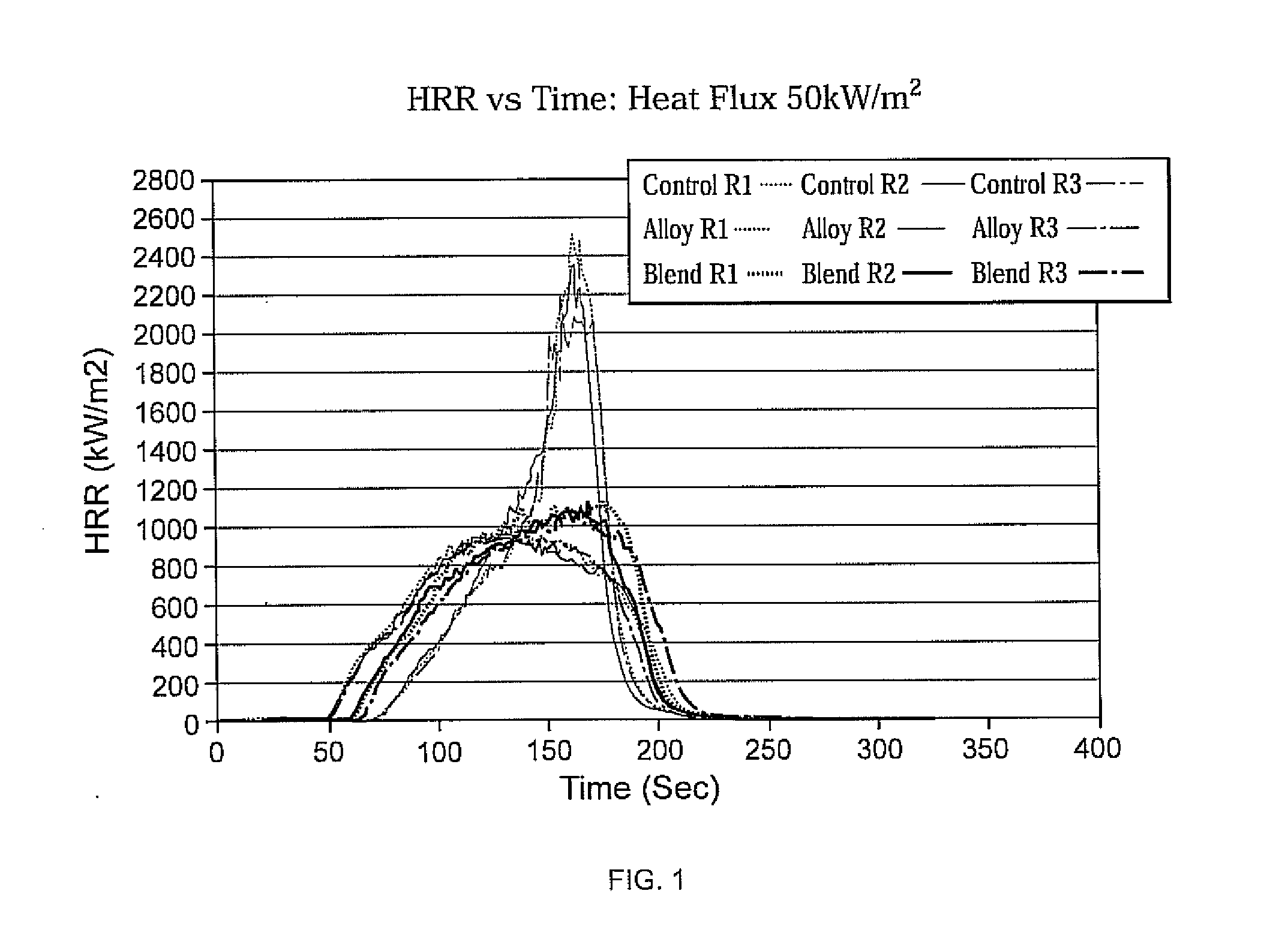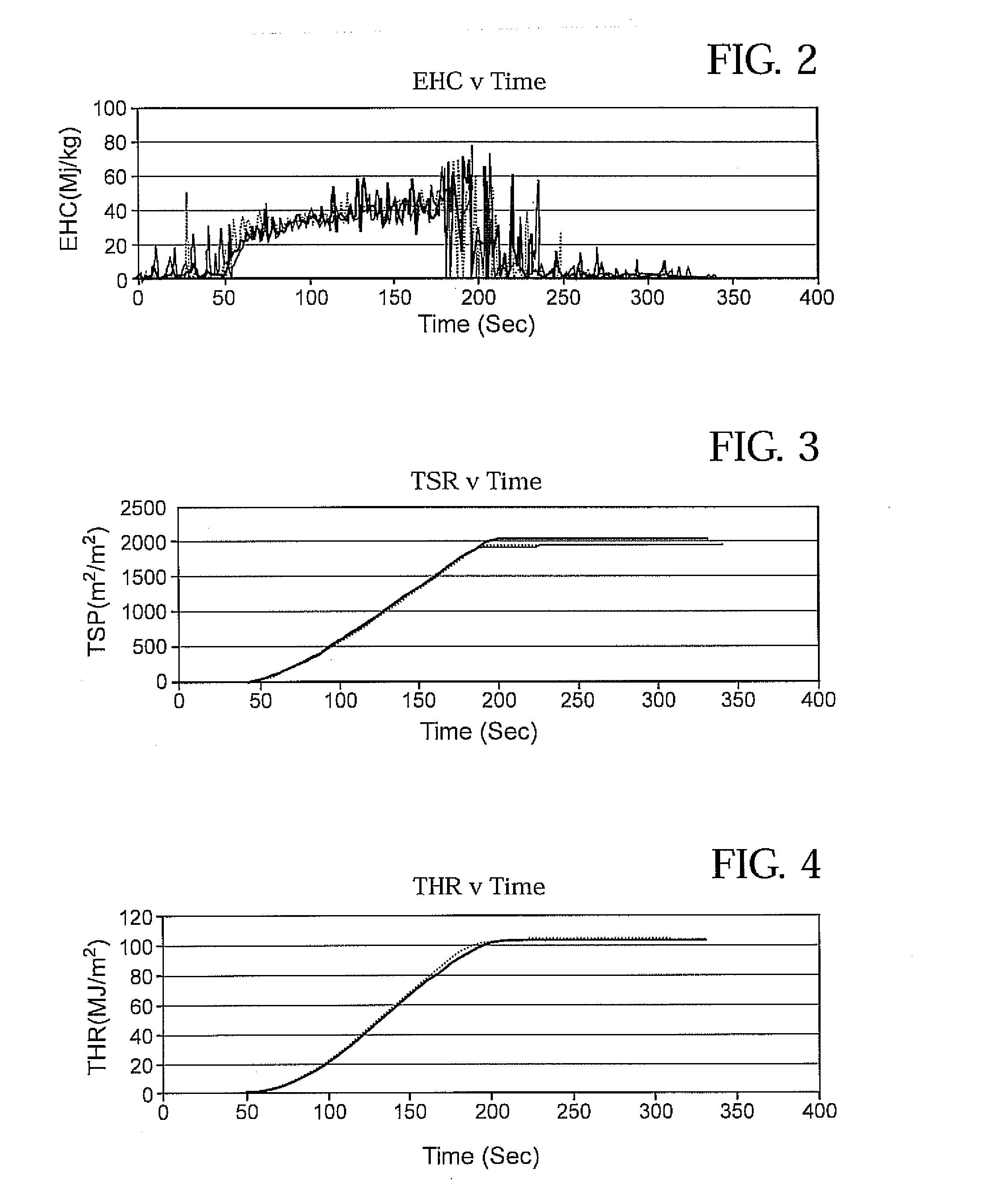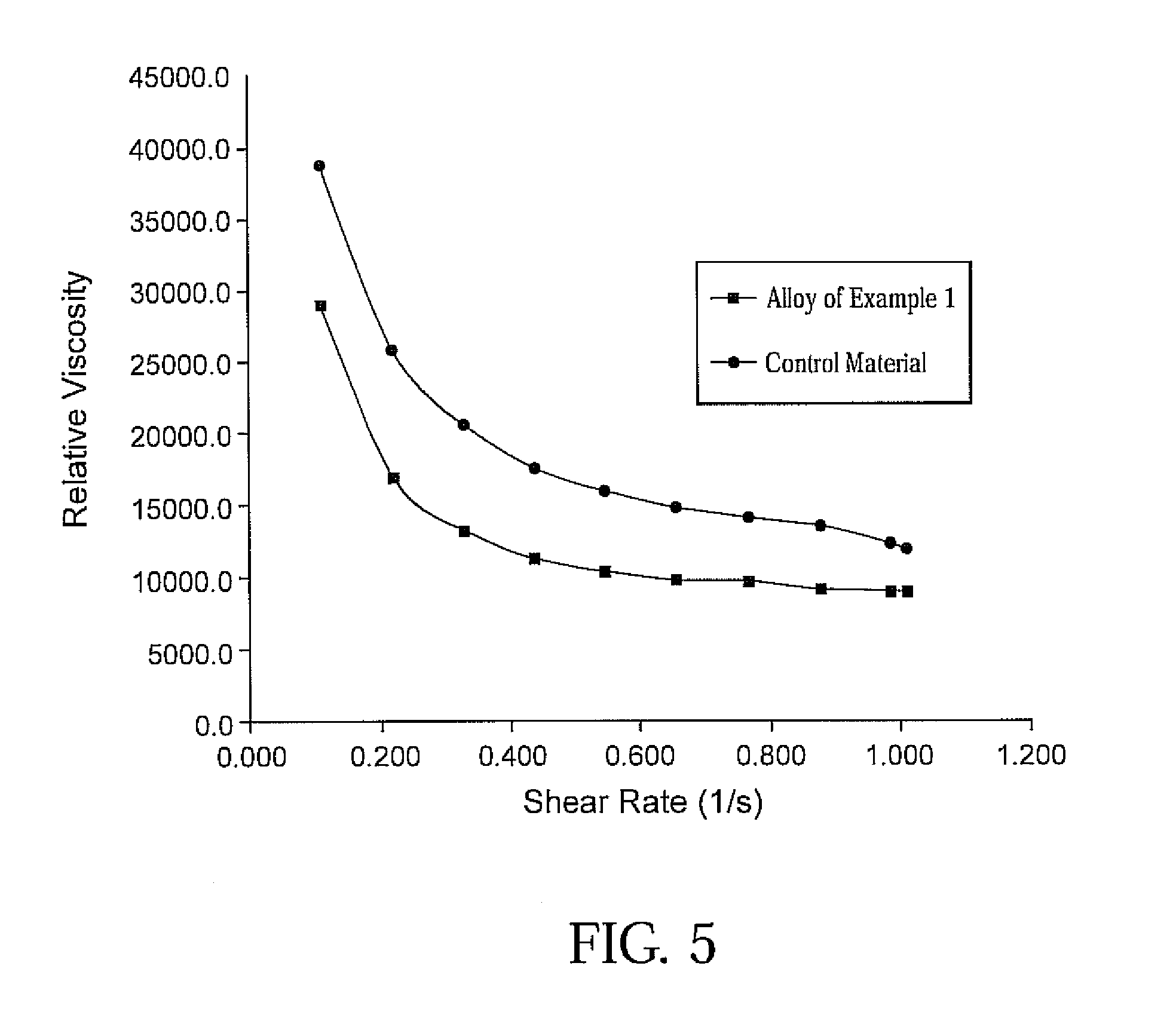Polyolefin composition
a polymer and composition technology, applied in the field of polyolefin materials, can solve the problems of incompatibility of different polymer materials found in plastic waste such as polypropylene, polyvinyl chloride, mica,
- Summary
- Abstract
- Description
- Claims
- Application Information
AI Technical Summary
Benefits of technology
Problems solved by technology
Method used
Image
Examples
example 1
[0056]An inventive polyolefin material of Formula A is prepared from the following components and as shown in Table 2:[0057]a. An isotactic homopolymer of polypropylene and ethylene containing 10% of ethylene comonomer with a melt flow rate of 20 grams / 10 minutes at 230° C. / 2.16 kilograms present at 39% by weight.[0058]b. A high density polyethylene with a specific gravity of 0.95 and a melt flow rate of 5 grams / 10 minutes at 190° C. / 2.16 kilograms present at 39% by weight.[0059]c. An ethylene-α-olefin copolymer present at 2% by weight where the α-olefin is octene.[0060]d. Talc with a 10 micrometer median particle size present at 10% by weight.[0061]e. Low density polyethylene having a melt flow rate of 10 grams / 10 minutes when measured at 190° C. / 2.16 kg present at 5% by weight.[0062]f. A linear low density polyethylene present at 5% by weight. The linear low density polyethylene has a melt flow of 10 grams / 10 minutes when measured at 190° C. / 2.16 kg. The linear low density polyeth...
example 2
[0083]The molding characteristics of the alloy of Formula A are measured and compared to control of 5MF HDPE, prime as control material. Material characteristics are shown in Table 3.
TABLE 4InjectionSpeedPeakShearPlastic(cm3 / sec)PressureRatePressureViscosityFORMULA A93180.110318028909183700.219370016895274350.329435013222364960.439496011298455680.548568010365546460.65864609818637450.76874509701728040.87780409168818930.98789309048909141.0291408961CONTROL94260.110426038841185660.219566025803276770.329677020575367720.439772017597458750.548875015956549760.6589760148316310850.76810850141327211900.87711900136538112250.98712250124109012131.011213011975
[0084]The relative viscosity of the alloy of Formula A is lower at equivalent shear rates compared to control. (FIG. 5)
example 3
[0085]An inventive mixture including the following of Formula B is prepared.
TABLE 5Formula BPercent w / wPolypropylene55PCR HDPE / PP Blend25Talc - 941020
[0086]The Formula B material includes post consumer recycled material (PCR). The PCR is a blend of HDPE and PP at a ratio of 60% w / w HDPE to 40% w / w PP. Formula B is tested for flex modulus as per ASTM D790 and compared to identical material with virgin HDPE or with no HDPE. The material of Formula B shows no loss in flex modulus relative to control. Formula B demonstrates a flex modulus of 240,000 Pa and a Notched Izod of 0.6 ft-lb / in.
PUM
| Property | Measurement | Unit |
|---|---|---|
| Fraction | aaaaa | aaaaa |
| Fraction | aaaaa | aaaaa |
| Percent by mass | aaaaa | aaaaa |
Abstract
Description
Claims
Application Information
 Login to View More
Login to View More - Generate Ideas
- Intellectual Property
- Life Sciences
- Materials
- Tech Scout
- Unparalleled Data Quality
- Higher Quality Content
- 60% Fewer Hallucinations
Browse by: Latest US Patents, China's latest patents, Technical Efficacy Thesaurus, Application Domain, Technology Topic, Popular Technical Reports.
© 2025 PatSnap. All rights reserved.Legal|Privacy policy|Modern Slavery Act Transparency Statement|Sitemap|About US| Contact US: help@patsnap.com



